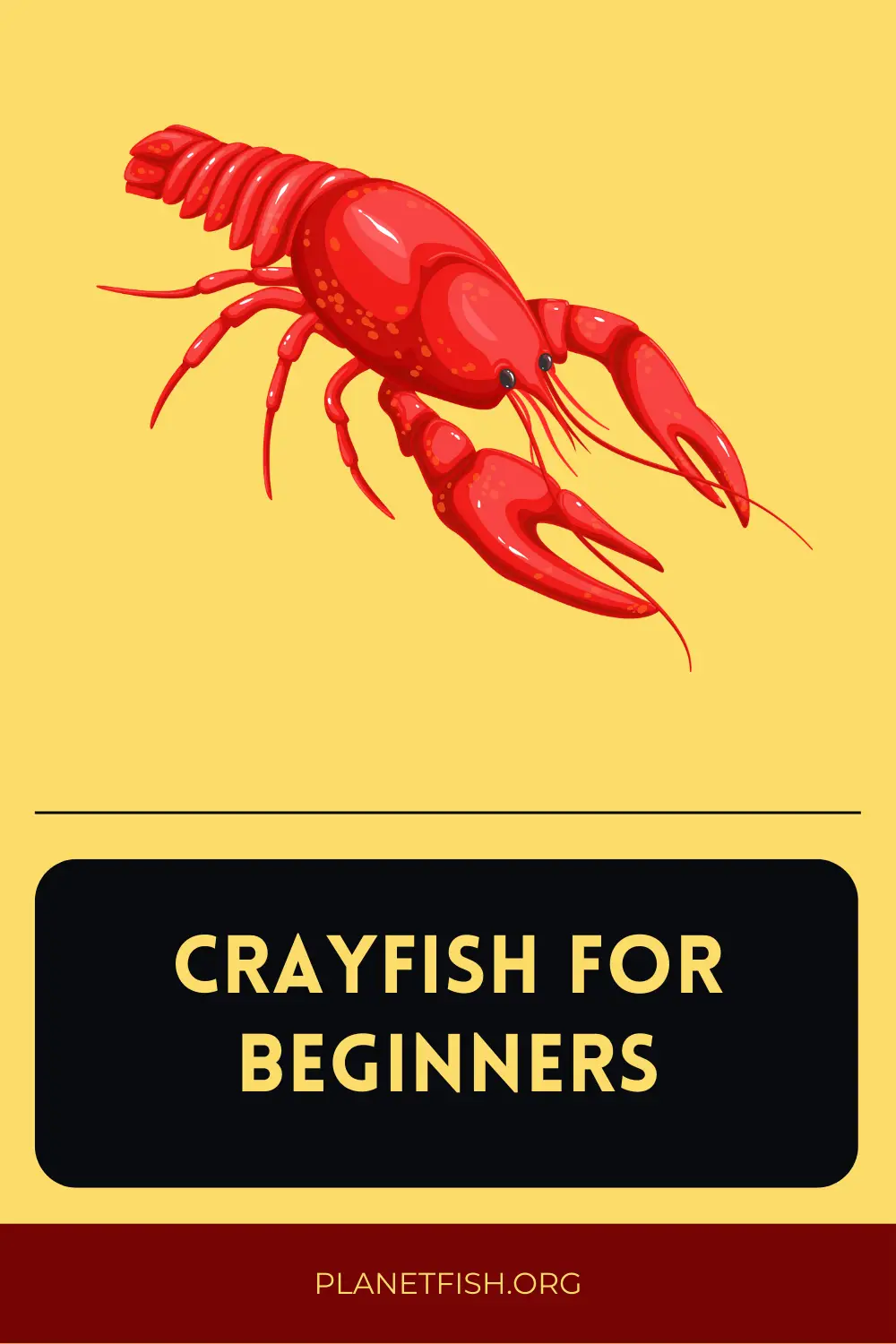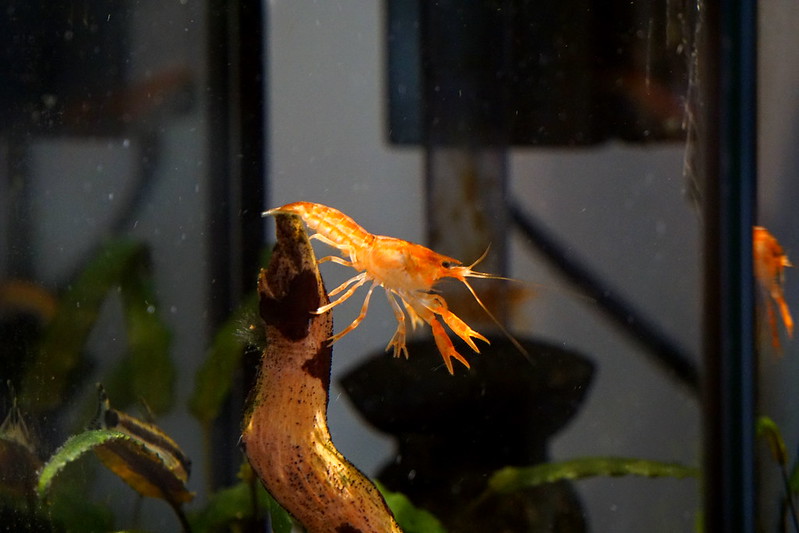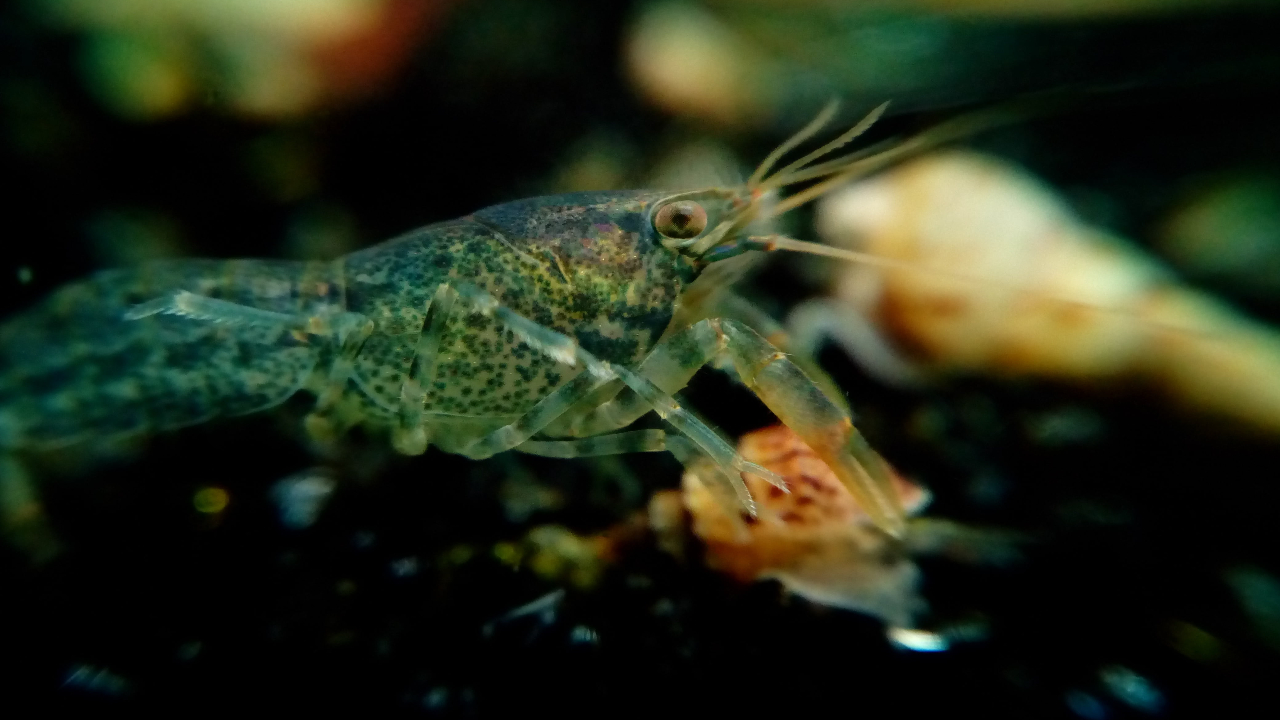Dwarf crayfish are often kept as pets in aquariums or as pets, but have you ever wondered where they came from?
Dwarf crayfish can come from a variety of sources, including being bred in captivity, collected from the wild, and even raised by other pet owners who were too busy to care for them.

The first step to learning about dwarf crayfish is understanding their biology and habitat.
Not only will this help you understand how they live and grow, but it will also make it easier to choose the right one for your tank.
Introduction To Dwarf Crayfish
If you’re looking to add some new life to your aquarium, you may be considering getting dwarf crayfish.
These little guys are a great addition to any tank, and they’re relatively easy to care for.
In this article, we’ll give you a crash course in everything you need to know about dwarf crayfish, including their ideal habitat, diet, and tank mates.
Dwarf crayfish are a popular choice for aquariums because they’re small and low-maintenance.
They’re also very active and make an interesting addition to your tank. Dwarf crayfish are typically found in slow-moving streams and rivers in North America.
They range in color from brown to olive green, and they have four pairs of legs that help them move around quickly.
When it comes to their diet, dwarf crayfish are omnivores, which means they’ll eat both plants and animals.
You can give them pellets or flakes designed for bottom-dwelling fish, or you can offer them live or frozen food such as brine shrimp or bloodworms.
It’s a good idea to supplement their diet with vegetables like lettuce or cucumber slices.
As far as tank mates go, dwarf crayfish do best with other peaceful fish that won’t try to eat them.
Good choices include guppies, mollies, platies, and tetras. Avoid putting them with larger fish that may see them as prey.
It’s also important to avoid putting them with other crayfish, as they may fight with each other.
When setting up a tank for your dwarf crayfish, it’s important to provide them with hiding places where they can feel safe.
Caves, rocks, and plants are all good options. You’ll also need to use a filter that’s designed for small tanks, as dwarf crayfish are sensitive to water quality.
 Image from Flickr
Image from Flickr
Dwarf crayfish are relatively easy to care for, but there are a few things you should keep in mind.
First, they’re very sensitive to changes in water quality, so it’s important to do regular water changes and monitor the levels of ammonia and nitrites in your tank.
Secondly, they’re known to be escape artists, so make sure your tank has a tight-fitting lid.
If you’re looking for a low-maintenance pet that’s also interesting and active, dwarf crayfish are a great choice. With proper care, they can live for two to three years in captivity.
Choosing A Tank
When it comes to choosing a tank for your dwarf crayfish, there are a few things you need to keep in mind.
The first is that these little critters are escape artists, so you’ll need a tank that has a tight-fitting lid.
You’ll also want to choose a tank that’s at least 10 gallons in size, as this will give your crayfish plenty of room to swim around and explore.
Another thing to consider is the type of substrate you’ll use in your crayfish tank. These creatures like to burrow, so something like gravel or sand is ideal.
Just be sure to avoid using any substrates that could be harmful if ingested, such as small rocks or shells.
Finally, you’ll need to make sure your crayfish tank is adequately filtered and aerated.
These animals produce a lot of waste, so a good filter is essential for keeping the water clean and healthy.
An air stone can also help provide the necessary aeration for your crayfish tank.
Replacing Water With Fresh Water
If your crayfish’s water becomes dirty, you’ll need to replace it with fresh water. To do this, remove the crayfish from its current tank and place it in a container of fresh water.
You’ll need to do a partial water change for your crayfish’s tank.
To do this, remove about 20-25% of the water from the tank and replace it with fresh, clean water.
Feeding Your Dwarf Crayfish
When it comes to feeding your dwarf crayfish, there are a few things you need to keep in mind.
First and foremost, these little guys are voracious eaters so you will need to provide them with a steady supply of food.
Secondly, they are not particularly picky regarding what they eat so just about anything will do.
Lastly, it is important to remember that overfeeding can be just as harmful as underfeeding, so be sure to strike a balance.
One of the best ways to ensure your dwarf crayfish always has something to eat is to set up a regular feeding schedule.
A good rule of thumb is to feed them once or twice a day, depending on their size and activity level.
If you find that they are constantly begging for food, you may need to increase the frequency of their meals.
Conversely, if they seem uninterested in their food or appear lethargic, you may want to back off on the amount you are giving them.
As for what to feed them, pretty much anything goes. They will happily munch on pellets, flakes, live food, frozen food, vegetables – you name it!
Just be sure that whatever you give them is small enough for them to eat easily and digest properly.
Overly large pieces of food can cause digestive issues and even blockages which can be fatal.
If you stick to a regular feeding schedule and offer a variety of foods, your dwarf crayfish
Dwarf Crayfish Breeding
Breeding Dwarf Crayfish is not difficult, but there are a few things to keep in mind. First, you’ll need to find a male and female that are both healthy and of similar size.
Next, you’ll need to provide them with a suitable breeding environment. This can be done by setting up a small aquarium with plenty of hiding places and a moderate water flow.
 Image from Flickr
Image from Flickr
Once the two crayfish have been introduced to each other, the female will begin laying eggs. The male will then fertilize them.
The eggs will be attached to the underside of rocks or other objects in the aquarium. After about two weeks, the eggs will hatch and the fry will be free-swimming.
At this point, you’ll need to provide them with food that is small enough for them to eat. Baby brine shrimp or bloodworms are usually perfect for this.
As they grow, you can begin giving them larger food items such as pellets or flakes.
From start to finish, the whole process of breeding Dwarf Crayfish takes around 2 months. However, if everything goes well, you’ll end up with dozens of healthy and happy baby crayfish!
Taking Care Of Dwarf Crayfish
Assuming you have already set up your dwarf crayfish tank, here are a few tips on how to take care of your new pets.
Dwarf crayfish are relatively easy to care for, but there are a few things you need to keep in mind.
First, they are very sensitive to changes in water quality and temperature, so it’s important to maintain stable conditions in their tank.
Second, although they are small, they are active and require a lot of space to move around. Third, because they are bottom-dwellers, they prefer tanks with plenty of hiding places and substrate to burrow into.
Here are a few specific tips for taking care of dwarf crayfish:
1. Maintain stable water quality and temperature.
To keep your dwarf crayfish healthy and happy, it’s important to maintain stable water conditions in their tank.
This means regular water changes and using a reliable filter system. It’s also important to keep an eye on the temperature of the water, as They are sensitive to changes in temperature.
2. Provide plenty of space and hiding places.
Dwarf crayfish are active little creatures that need plenty of space to move around. A good rule of thumb is to provide at least 10 gallons of space per crayfish.
In addition, because they are bottom-dwellers, they prefer tanks with plenty of hiding places and substrate to burrow into. Be sure to provide plenty of rocks, driftwood, and plants for them to hide in.
3. Feed them a variety of foods.
Dwarf crayfish are omnivorous and will eat just about anything you give them. However, providing them with a balanced diet that includes both meaty and vegetable-based foods is important.
You can give them freeze-dried foods, pellets, live foods, and even vegetables. Just be sure to avoid overfeeding them as this can lead to water quality problems.
4. Be careful when adding new fish to their tank.
Because they are relatively small and timid, dwarf crayfish are often bullied by larger fish. For this reason, it’s important to be careful when adding new fish to their tank.
Avoid adding fish that are too large or aggressive for them to handle.
With proper care, They can make great pets that will provide you with years of enjoyment.
Reproductive Cycle And Factors That Influence It
Dwarf crayfish reproduce by a process called parthenogenesis, meaning that the female produces eggs that hatch into young ones without being fertilized by a male.
The reproductive cycle of dwarf crayfish is influenced by several factors, including water temperature, food availability, and day length.
Water temperature plays a major role in the reproductive cycle of dwarf crayfish. Warmer water temperatures stimulate the production of eggs, while cooler temperatures delay egg production.
In the wild, They typically reproduce in late spring or early summer when water temperatures are warmest.
Food availability also influences the reproductive cycle of dwarf crayfish. When food is plentiful, female crayfish are able to produce more eggs than when food is scarce.
This is because abundant food resources allow female crayfish to put on more body mass, which in turn allows them to produce more eggs.
Finally, day length also affects the reproductive cycle of dwarf crayfish. Longer days stimulate egg production, while shorter days delay it.
In the wild, They typically reproduce during the longest days of summer when days are longest.
Dwarf crayfish typically live for 2-3 years. However, in captivity, they have been known to live for up to 5 years.
What is the lifespan of a dwarf crayfish?
Dwarf crayfish have a lifespan of around 2-3 years. However, some species can live for up to 5 years.
The average lifespan of a dwarf crayfish is shorter than that of other types of crayfish because they are smaller and have fewer energy reserves.
Dwarf crayfish are also more susceptible to predation and disease.
What is the difference between a dwarf crayfish and a regular crayfish?
There are several key differences between dwarf crayfish and regular crayfish. For one, dwarf crayfish stay much smaller than regular crayfish, only reaching about one to two inches in length at maturity.
This makes them a better choice for smaller aquariums. Dwarf crayfish are also much less aggressive than regular crayfish, and they are less likely to damage plants in your aquarium.
Finally, dwarf crayfish are available in a wider variety of colors than regular crayfish, so you can find the perfect color to match your aquarium décor.
What are some of the adaptations of a dwarf crayfish?
Dwarf crayfish have several adaptations that help them survive in their environment. They are small in size, which helps them hide from predators.
They also have a hard shell, which protects them from being eaten. Their claws are also sharp, which helps them catch food and defend themselves.
Some dwarf crayfish species are able to change their color to match their surroundings. This helps them camouflage themselves and avoid being seen by predators.
They also have long antennae that help them detect food and danger.
Why Should You Keep Dwarf Crayfish?
If you’re looking for a pet that’s both unique and low-maintenance, a dwarf crayfish is a great option. These little creatures are easy to care for and make interesting pets.
Here are some reasons why you should keep a dwarf crayfish:
1. They’re low-maintenance
Dwarf crayfish are very easy to care for. They don’t need much space and can be kept in a small aquarium or even a fish bowl.
All you need to do is provide them with food and clean water, and they’ll be happy.
2. They’re interesting pets
Dwarf crayfish are fun to watch and interact with. They have their own personalities and can be quite entertaining to watch as they go about their day-to-day activities.
3. They’re good for beginners
If you’re new to keeping pet invertebrates, dwarf crayfish are a good choice because they’re so easy to care for.
Once you’ve got the hang of things, you can move on to keeping other types of invertebrates, such as crabs or snails.
4. They don’t cost much to keep
Dwarf crayfish are very affordable pets. You can find them for sale online or at your local pet store, and they don’t require any special equipment or supplies that are costly.
5. They’re easy to find
Dwarf crayfish are widely available, so you shouldn’t have any trouble finding them for sale.
If you’re looking for a pet that’s both unique and low-maintenance, a dwarf crayfish is a great option. These little creatures are easy to care for and make interesting pets.
Conclusion
If you’re thinking about getting a dwarf crayfish for your aquarium, there are a few things you need to know.
First, they’re small but mighty – don’t let their size fool you. Second, they’re great cleaners and will help keep your tank clean.
Third, they’re social creatures and do best in groups, so plan on getting more than one. Lastly, they need hiding places and plenty of plants to feel secure.
With all that in mind, dwarf crayfish make great additions to any aquarium – especially if you’re just starting out. So what are you waiting for? Go get yourself some dwarf crayfish!

